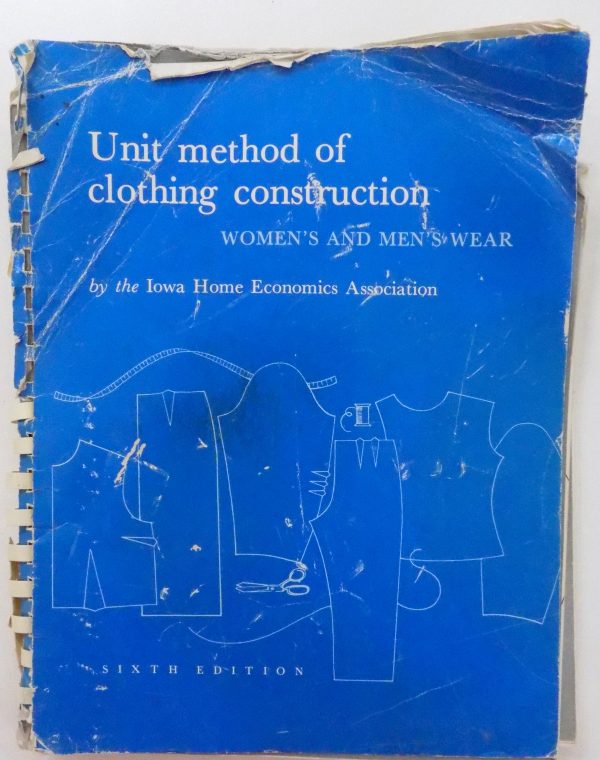There are times when people in classes ask: “If I could have just one clothing sewing book on my shelves, what should it be?”
We offer the same basic advice we always do: Vogue’s Sewing Book, The Reader’s Digest Guide to Sewing, &c…
But really, if you really want a concise and yet comprehensive guide to sewing, you will own the Unit Method of Clothing Construction by the Iowa Home Economics Association.

Edited by Phyllis Brackelsberg and Bertha Shaw and Illustrated by Harriet Allen and Donna Danielson, the Unit Method of Clothing Construction will help you think of sewing in a more specific way: So many times newer sewers will get all wrapped up in the totality of a project and not think about its individual components. You steam ahead with “shirt, shirt, shirt… I need a book on making shirts… shirt, shirt, shirt”… but don’t see that conceptually “shirt” is just a series of components that get used across the board in clothing construction. This is where the concept of “units” comes in.
The book helps you think of sewing in all of its multiple components so that it is easier to adapt techniques from one project to another. E.g. fly-front zippers may be mostly for jeans and casual pants, but the technique you use to insert them can be adapted to any garment opening as a placket that is buttoned or zipped. Plackets for the front of shirts can be understood to be a universal application for a functional finished edge on any opening.
This is an old-fashioned (and probably more preferable) way to think about sewing. You learn to understand all of the units of construction, throw them into your mental files, and then access them as you problem solve. Not enough beginners really get why this is so helpful as they try to just make it through the project at hand. Or they make a dress shirt or pair of dress pants and then hesitate to make a shift or casual jacket when the techniques are the same, it is just the shape and fit that has changed.
Unit Method of Clothing Construction walks you through all of this with a really plain and direct language that is easy for anyone fluent in English to understand. It makes a great beginner or intermediate book to have on hand in your sewing library.
It will walk you though all the set-up basics:
Contents:
1. Introduction to clothing construction
2. Sewing equipment & supplies
3. Pattern selection
4. Fabric selection & manipulation
5. Fitting problems & pattern alterations
6. Cutting & marking
7. Pressing & pressing equipment
8. Unit construction sequence
9. Interfacings, linings, & underlinings
10. Darts, tucks, pleats, and gathers
11. Seams & edge finishes
12. Collars & neckline finishes
13. Buttonholes & fasteners
14. Sleeves
15. Pockets
16. Waistline treatments
17. Zipper and sleeve plackets
18. Hems
19. Menswear
Glossary
Metric Conversion Chart
Index





About the only thing that the modern sewer will miss out on with this handy-dandy manual is the mention of a serger. Like most vintage books before maybe 1985, the preferred finish is some actual seam like a french or felled seam or a pinked edge. In all honesty, for the average sewer, especially those young and just starting out or those trying to stay on a budget, knowing how to finish without investing in a separate machine that can cost from US$200 and up, this is a good thing. Aside from knitwear and retail construction, sergers are highly overrated generally.
So check it out – you can easily find this in thrift stores for nothing and it is available in all of its various editions (it was printed from 1962 through the early 80s).
Or you can borrow ours, but you have to promise to be more gentle with it than that Austrian customs agent in 1996 was.
